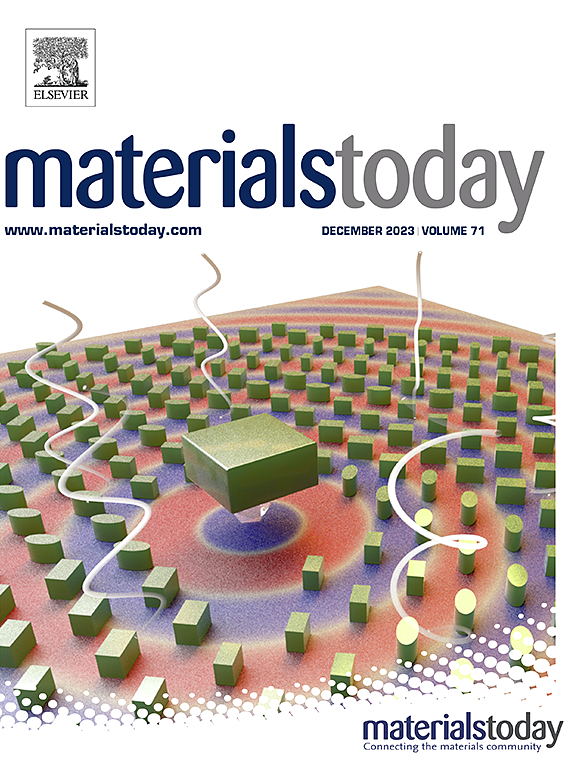Bypassing desolvation step ensures fast intercalation chemistry for titanate-based capacitors endured at −60 °C
IF 21.1
1区 材料科学
Q1 MATERIALS SCIENCE, MULTIDISCIPLINARY
引用次数: 0
Abstract
Subzero temperature (subzero-T) performance of the sodium-ion hybrid capacitors (SIHCs) is severely limited by the sluggish ion desolvation process of faradic anodes based on intercalation chemistry. To conquer the obstacle, a desolvation-free SIHCs based on co-intercalation chemistry and anion adsorption is constructed, which essentially circumvent the most restrictive desolvation step. The theoretical calculations combined with experimental characterization interprets the co-intercalation possibility of sodium titanate (NTO) and the relationship between oxygen vacancies and co-intercalation chemistry. The redistributed charge in short-range with weakened polarization effect and reduced Fermi level of the entire crystal make Na+-diglyme co-intercalation easier and more reversible. Particularly, the disordered “valve” interface significantly reduces diffusion energy barrier, lowers bulk impedance, and generates high-quality SEI film, therefore, the subzero-T working ability of NTO has been sufficiently improved. As expected, the constructed desolvation-free SIHCs exhibit superior temperature compatibility and extraordinary cycling stability, maintaining capacitance retention of 74 % after 20,000 cycles at −40 °C and cycling over 10,000 cycles with a capacitance retention of 78 % at −60 °C. This work extends the understanding of the co-intercalation chemistry in host materials and provides insights for designing a better subzero-T energy storage system.

求助全文
约1分钟内获得全文
求助全文
来源期刊

Materials Today
工程技术-材料科学:综合
CiteScore
36.30
自引率
1.20%
发文量
237
审稿时长
23 days
期刊介绍:
Materials Today is the leading journal in the Materials Today family, focusing on the latest and most impactful work in the materials science community. With a reputation for excellence in news and reviews, the journal has now expanded its coverage to include original research and aims to be at the forefront of the field.
We welcome comprehensive articles, short communications, and review articles from established leaders in the rapidly evolving fields of materials science and related disciplines. We strive to provide authors with rigorous peer review, fast publication, and maximum exposure for their work. While we only accept the most significant manuscripts, our speedy evaluation process ensures that there are no unnecessary publication delays.
 求助内容:
求助内容: 应助结果提醒方式:
应助结果提醒方式:


